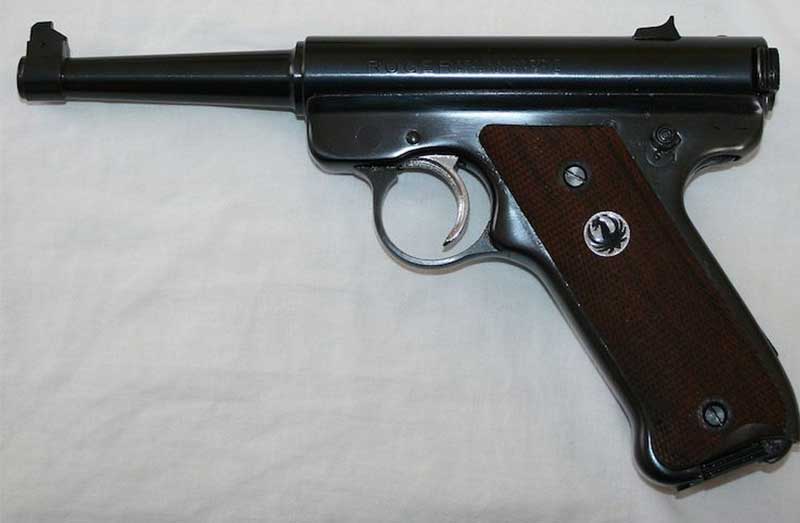
Since its beginnings in 1949, Sturm, Ruger & Company, known simply as Ruger, has become one of the leading firearms manufacturers in the world, producing more than 400 variations of over 30 different product lines and maybe more by the time you read this article.
The company was founded when Alexander McCormick Sturm and William B. Ruger – hence the name Sturm, Ruger, and Co. – rented a small machine shop in Southport, Connecticut. Sturm, who hailed from the wealthy McCormick mercantile family, provided the investment capital, while Ruger, who began designing guns as a student at the University of North Carolina at Chapel Hill, brought his firearms engineering ideas to the table.
Want to know more about this American firearms giant? Here are six quick facts you may (or may not) know about Ruger:
1. Their first product was the Ruger Standard
The first gun produced by this legendary American gunmaker traces its roots to Japan! Ruger acquired a World War II-era Japanese Nambu pistol from a U.S. Marine who had returned from war and sought to duplicate the design in his workshop. He successfully built two but lacked the money to start a company to produce and market the design. Enter Alexander Sturm, who brought the $50,000 of venture capital needed to get the project running. The duo began producing the pistol, named simply the Ruger Standard, which went on to become the forefather of the most successful .22 rimfire pistols ever produced.
2. The AR-15 almost belonged to Ruger

As most firearms enthusiasts know, Eugene Stoner is the man behind the AR-15 rifle, having developed the lightweight semi-automatic while working as the chief engineer at ArmaLite. When ArmaLite began searching for a manufacturer to license and produce the AR-15, Stoner purportedly offered the rights to Ruger. As history would have it, Ruger declined, and the company eventually struck a deal with Colt, who became synonymous with the AR-15 from then on.
3. Ruger makes more than guns

While the world knows the name Ruger first and foremost as a manufacturer of sturdy, reliable firearms, the company does more than build guns. Early on, Ruger understood that to be able to design and manufacture firearms their way, they needed to invest in quality investment castings. In 1963, the company established Pine Tree Castings, which produced the finest investment castings not only for Ruger’s guns but for other customers in a wide range of industries, including automotive, defense, sporting goods, tools, medical equipment, and many others – even other gunmakers at one point. Ruger even produced titanium golf clubs for Callaway in the 1990s, with some marked “Ruger Titanium,” featuring the famous Sturm Ruger eagle.
4. Ruger test fires every gun they make

To back up their reputation of quality, durability, and reliability, Ruger test-fires every single firearm they produce, as well as proof-tests the chamber of every centerfire gun they make. A proof load is a specially made load with a fixed higher percentage of pressure than the SAAMI max pressure of a given cartridge. Ruger tests each chamber with a proof load 50 percent higher than that SAAMI maximum pressure! Ruger performs this test to ensure every firearm is strong enough to absorb above and beyond the pressures that normal ammunition doles out.
5. “Harvard’s Revenge”
Bill Ruger once said, “a Harvard Business School graduate will never run this company!” What Mr. Ruger certainly didn’t have powers of prediction, as the company’s Former Chief Executive Officer,, Michael O. Fifer, is indeed a graduate of Harvard’s prestigious business school. In fact, despite Ruger’s jab at the famous academic institution, the school has used his company as a model case study in their curriculum for years!
6. The Ruger 10/22 is the king of rimfire

Ruger has built an empire on producing rugged, reliable rimfire guns, starting with the aforementioned Ruger Standard, but the iconic Ruger 10/22 autoloading rifle is the undisputed king of the .22 mountain. Introduced in 1964, Bill Ruger’s slick-yet-simple .22LR semi-auto rifle has become the archetype of an easy-to-use and reliable rimfire gun. The 10/22 is without question the most popular rimfire rifle of all time, with sales surpassing 6 million units. Generations of Americans have embraced the 10/22 as the ultimate training rifle, plinking gun, and varmint hunters, and its timeless simplicity paired with endless customization options make it the perfect .22 for just about anyone.


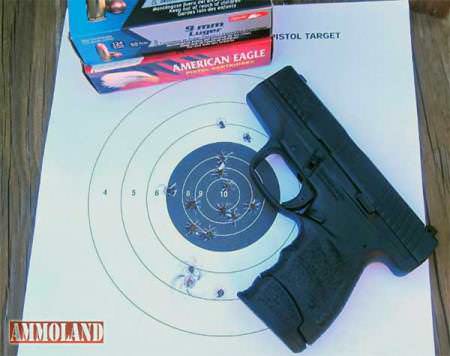
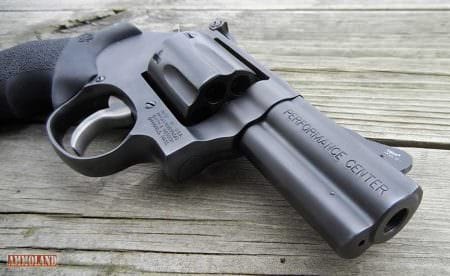
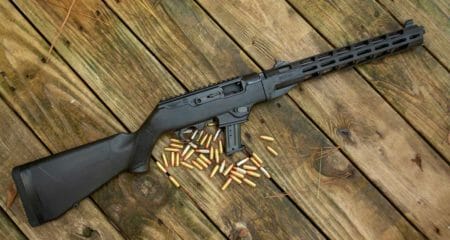
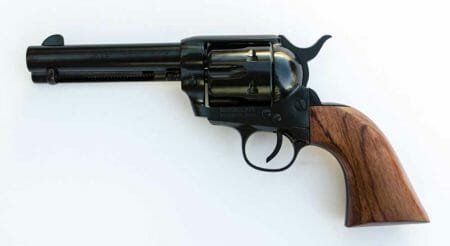
And do you remember that the 30 round factory magazines in the white boxes with red printing for the Mini-14 were available ONLY to law enforcement? No exceptions! And ONLY through class 3 dealers!!!!
Yes, Bill Ruger started out doing wonerful things for the firearms industry but in the end he forgot his way and became a do gooder “progressive” for sure. Now that he is gone, Good Riddance!
I purchased my first Ruger, a Model 77 in 6mm Rem, in 1970 and then a Model 77 in 30-06 and a Super Blackhawk in 1972. I now have four of their revolvers and three of their auto pistols in my safe but none of their rifles. While I have forgiven Bill Ruger for what he did in ’94, I have not forgotten. I also remember his statements on handguns in the hands of the general public.
Douglas McClennahan, founder of Charter Arms, designed the 10/22 from a blank sheet of paper while he was employed by Ruger. He also, over his own objections, designed the ill fated “Hawkeye” single shot handgun. Yes, I knew Doug, held in my hands the few serial number 1 examples of those handguns which were not stolen from him.
Many people don’t know that Ruger is also an unusual business, especially in the firearms industry. They do not retain a stock of finished goods at their factories, preferring to manufacture products, and immediately ship them to their stocking distributor partners. They are also one of the few firearms manufacturers that is a stock company that you can purchase stock in (it’s listed on the New York Stock Exchange as “RGR”). It’s been a good investment over time, paying variable dividends as earnings are made. The firearms industry is cyclic in nature. Subsidiaries like Pine Tree Casting keep income more… Read more »
As a longtime satisfied owner of four Ruger firearms, I have only one beef. Why can they not make a Ruger Mini-14 which accepts AR magazines?
7. Bill Ruger Sr sold out the 2A and Ruger’s customers and helped get the 1994 assault weapons ban passed in the Clinton era. “No honest man needs more than 10 rounds in any gun.” – Bill Ruger
Smith & Wesson also caved with their notorious keyed lock on the side of their revolvers.
Older peeps remember this kind of stuff. Both companies took a big hit on their stock price and reputation in the industry. Is all forgiven?
UGH!! I’m a big Ruger fan But it always irks me to no end to hear anyone throwing out the old BS that the 10/22 is the “KING”, “most popular” yada yada yada .22 rimfire rile in the U.S. The Marlin Model 60 earned the right to that label long, long ago. The Model 60 has outsold the 10/22 11+ million to 7+ million. That is more than 1 1/2 times as many, not to mention the sales of the Marlin 795, the mag fed (like the 10/22) version of the Model 60. Personally, I would choose a pre-Remington built… Read more »
Ruger makes quality firearms , the 10-22 and M77 and Blackhawk are firearms that have survived the test of time . The Ruger American budge rifle is a very accurate addition to thier list of successful products they have produced in the past .
I’ve had a Ruger SR9 for over five years. I take it to the range on average twice a month, and have since I got it. Every time I go I shoot at least 150 rounds. I shoot factory and handloads. This gun just flat out shoots! I recommend Ruger without fail. Great gun for a fair price. And, as a bonus it’s American.
Politics aside I own a Mark I and a 10/22. They are the best 22 LR’s I’ve ever shot!